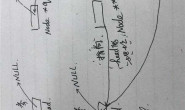SendMessage (hwndEdit, EM_LIMITTEXT, 32000, 0L);的意思是设置 文本框 最多能包含的字符的个数为32000,但是那个最后的那个参数0L是什么意思呀?
解决方案:25分
long 类型常量 0
long 后缀为,l, L,
float 后缀是 f
int ,double 不需要后缀
long double 后缀也是L
long long 后缀是 ll,LL
unsigned long long 后缀是 ULL,ull,也有编译器 支持 llu,LLU,
unsigned 后缀是 U,u
long 后缀为,l, L,
float 后缀是 f
int ,double 不需要后缀
long double 后缀也是L
long long 后缀是 ll,LL
unsigned long long 后缀是 ULL,ull,也有编译器 支持 llu,LLU,
unsigned 后缀是 U,u
解决方案:5分
msdn中 搜下EM_LIMITTEXT
SendMessage(
(HWND) hWnd, // handle to destination window
EM_LIMITTEXT, // message to send
(WPARAM) wParam, // text length
(LPARAM) lParam // not used; must be zero
);
SendMessage(
(HWND) hWnd, // handle to destination window
EM_LIMITTEXT, // message to send
(WPARAM) wParam, // text length
(LPARAM) lParam // not used; must be zero
);
解决方案:5分
这个参数没用到,随便传一个数
解决方案:5分
C++ Integer Constants
Integer constants are constant data elements that have no fractional parts or exponents. They always begin with a digit. You can specify integer constants in decimal, octal, or hexadecimal form. They can specify signed or unsigned types and long or short types.
Syntax
integer-constant :
decimal-constant integer-suffixopt
octal-constant integer-suffixopt
hexadecimal-constant integer-suffixopt
“”c-char-sequence””
decimal-constant :
nonzero-digit
decimal-constant digit
octal-constant :
0
octal-constant octal-digit
hexadecimal-constant :
0x hexadecimal-digit
0X hexadecimal-digit
hexadecimal-constant hexadecimal-digit
nonzero-digit : one of
1 2 3 4 5 6 7 8 9
octal-digit : one of
0 1 2 3 4 5 6 7
hexadecimal-digit : one of
0 1 2 3 4 5 6 7 8 9
a b c d e f
A B C D E F
integer-suffix :
unsigned-suffix long-suffixopt
long-suffix unsigned-suffixopt
unsigned-suffix : one of
u U
long-suffix : one of
l L
64-bit integer-suffix :
i64
To specify integer constants using octal or hexadecimal notation, use a prefix that denotes the base. To specify an integer constant of a given integral type, use a suffix that denotes the type.
To specify a decimal constant, begin the specification with a nonzero digit. For example:
int i = 157; // Decimal constant
int j = 0198; // Not a decimal number; erroneous octal constant
int k = 0365; // Leading zero specifies octal constant, not decimal
To specify an octal constant, begin the specification with 0, followed by a sequence of digits in the range 0 through 7. The digits 8 and 9 are errors in specifying an octal constant. For example:
int i = 0377; // Octal constant
int j = 0397; // Error: 9 is not an octal digit
To specify a hexadecimal constant, begin the specification with 0x or 0X (the case of the “x” does not matter), followed by a sequence of digits in the range 0 through 9 and a (or A) through f (or F). Hexadecimal digits a (or A) through f (or F) represent values in the range 10 through 15. For example:
int i = 0x3fff; // Hexadecimal constant
int j = 0X3FFF; // Equal to i
To specify an unsigned type, use either the u or U suffix. To specify a long type, use either the l or L suffix. For example:
unsigned uVal = 328u; // Unsigned value
long lVal = 0x7FFFFFL; // Long value specified
// as hex constant
unsigned long ulVal = 0776745ul; // Unsigned long value
Integer constants are constant data elements that have no fractional parts or exponents. They always begin with a digit. You can specify integer constants in decimal, octal, or hexadecimal form. They can specify signed or unsigned types and long or short types.
Syntax
integer-constant :
decimal-constant integer-suffixopt
octal-constant integer-suffixopt
hexadecimal-constant integer-suffixopt
“”c-char-sequence””
decimal-constant :
nonzero-digit
decimal-constant digit
octal-constant :
0
octal-constant octal-digit
hexadecimal-constant :
0x hexadecimal-digit
0X hexadecimal-digit
hexadecimal-constant hexadecimal-digit
nonzero-digit : one of
1 2 3 4 5 6 7 8 9
octal-digit : one of
0 1 2 3 4 5 6 7
hexadecimal-digit : one of
0 1 2 3 4 5 6 7 8 9
a b c d e f
A B C D E F
integer-suffix :
unsigned-suffix long-suffixopt
long-suffix unsigned-suffixopt
unsigned-suffix : one of
u U
long-suffix : one of
l L
64-bit integer-suffix :
i64
To specify integer constants using octal or hexadecimal notation, use a prefix that denotes the base. To specify an integer constant of a given integral type, use a suffix that denotes the type.
To specify a decimal constant, begin the specification with a nonzero digit. For example:
int i = 157; // Decimal constant
int j = 0198; // Not a decimal number; erroneous octal constant
int k = 0365; // Leading zero specifies octal constant, not decimal
To specify an octal constant, begin the specification with 0, followed by a sequence of digits in the range 0 through 7. The digits 8 and 9 are errors in specifying an octal constant. For example:
int i = 0377; // Octal constant
int j = 0397; // Error: 9 is not an octal digit
To specify a hexadecimal constant, begin the specification with 0x or 0X (the case of the “x” does not matter), followed by a sequence of digits in the range 0 through 9 and a (or A) through f (or F). Hexadecimal digits a (or A) through f (or F) represent values in the range 10 through 15. For example:
int i = 0x3fff; // Hexadecimal constant
int j = 0X3FFF; // Equal to i
To specify an unsigned type, use either the u or U suffix. To specify a long type, use either the l or L suffix. For example:
unsigned uVal = 328u; // Unsigned value
long lVal = 0x7FFFFFL; // Long value specified
// as hex constant
unsigned long ulVal = 0776745ul; // Unsigned long value




